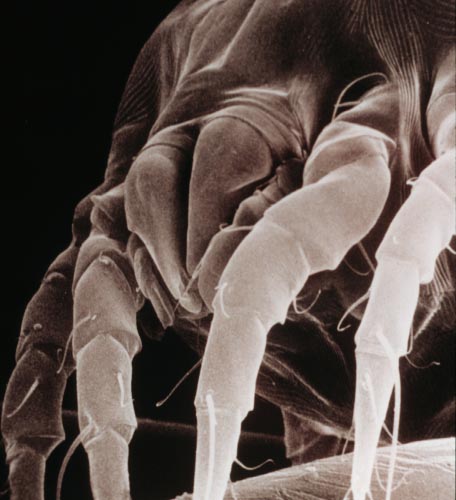
House dust mite, Dermatophagoides spp.
Photograph by: Acarology Laboratory, Ohio State University.
Common Name: House dust mite
Scientific Name: Dermatophagoides spp.
Order: Acari
Description: The American house dust mite, Dermatophagoides farinae Hughes, and the European house dust mites, D. pteronyssinus (Trouessart) are microscopic (0.3 to 0.4 mm long) and rarely seen without the aid of a microscope.
Life cycle: Female mites lay up to 50 eggs each. Eggs hatch into tiny mites that develop through several stages to adults within about 3 weeks.
Habitat and food source(s): House dust mites live in warm, humid environments in carpets, upholstery, feather pillows, and under furniture and bedroom mattresses. They feed on shed scales from human skin such as dandruff. Waste product particles (droppings) produced by the mites are the main substances in house dust to which allergic people react. Each mite can produce about 20 waste particles per day, and these particles can cause reactions even after the mites have been removed.
Pest status: Cause allergic reactions in some people, including bronchial asthma, nasal allergies, skin allergies and other symptoms. They are common in almost every home. House dust mites do not bite.
For additional information, contact your local Texas A&M AgriLife Extension Service agent or search for other state Extension offices.
Literature: Ebeling 1978.